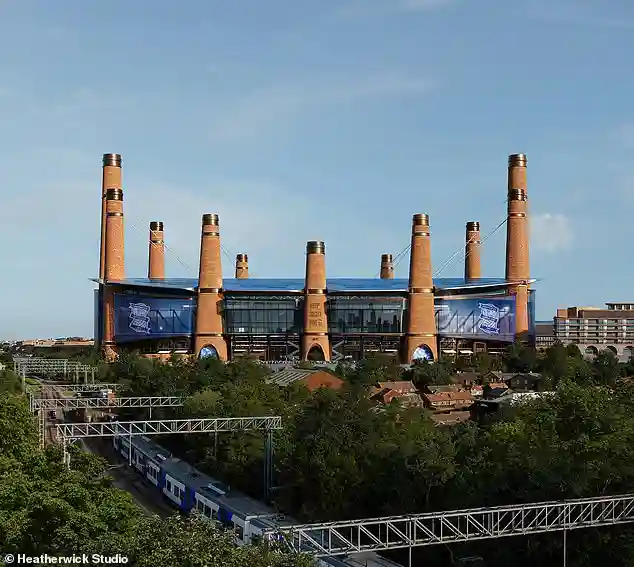The UK has officially thrown its hat in the ring to host the 2035 FIFA Women’s World Cup, and the scale of the bid feels nothing short of monumental.
When the proposal went in on Friday morning, it arrived with a sprawling list of stadiums spread across England, Wales, Scotland and Northern Ireland — including a few that, interestingly enough, don’t even exist yet.
A Tournament That Would Rewrite British Sporting History
Should FIFA give the nod, this would become the biggest single-sport event ever staged on UK soil.
It would leave behind the memories of the 2015 Rugby World Cup and even the Euro ’96 tournament in terms of size and global reach.
The bid outlines 22 potential venues, with the majority based in England and a strong supporting cast from each of the other home nations.
Among the instantly recognisable names are Wembley, The Emirates, The Principality Stadium, and Everton’s new Hill Dickinson Stadium.
But it’s the inclusion of still-unbuilt arenas that has raised the most eyebrows.
The Stadiums Still on the Drawing Board
Two clubs, in particular, are featured in ways that might surprise casual fans.
Manchester United’s vision for a redeveloped Old Trafford makes the list, even though not a single brick has been laid since Sir Jim Ratcliffe’s grand announcement last spring.
And down in the Midlands, Birmingham City’s proposed Powerhouse Stadium has also been pencilled in — the club hopes to open the doors in time for the 2030–31 season, under the ownership influence of Tom Brady.
Architects behind Birmingham’s project have spoken with almost evangelical passion, promising a design that will “transform the city forever” with an eye-watering £2.5 billion construction investment.
FIFA’s Standards Prompt Some Tweaks
Despite hopes for a futuristic super-arena, FIFA wasn’t convinced by the early blueprints for United’s proposed 100,000-seat rebuild.
As a result, the bid lists Old Trafford as it stands today.
Two more stadiums — Stamford Bridge and Wrexham’s Stok Cae Ras — also failed to pass FIFA’s technical benchmarks.
Chelsea’s situation is particularly intriguing, with the bid instead submitting a placeholder venue dubbed “Chelsea Stadium.”
Owner Todd Boehly is reportedly exploring alternative options for the club’s long-term home.
A Growing Tournament Needs Bigger Grounds
The Women’s World Cup is gearing up for a major expansion.
From 2031 onward, the competition will feature 48 national teams, matching the size of the men’s edition.
That shift means at least 15 stadiums are required to stage the event — something the UK can comfortably supply.
If hosted in Britain, the 2035 tournament would span 39 action-packed days, with a massive 104 matches scheduled.
Four Nations, One Ambition
The English, Welsh, Scottish, and Irish FAs issued a joint statement emphasising the transformational potential of bringing the tournament to the UK.
They highlighted not only what it would mean for the women’s game, but also the societal impact — before, during and long after the event.
Their words were echoed in Westminster. Prime Minister Keir Starmer spoke warmly about the way the Lionesses have ignited enthusiasm among girls nationwide, describing the bid as a natural next step.
He linked the effort to the government’s investment in school sports and community pitches through the Plan for Change.
The Lionesses’ Influence Continues to Grow
It’s impossible to discuss this bid without acknowledging the extraordinary rise of the England women’s team under Sarina Wiegman.
With consecutive European Championship titles and a 2023 World Cup Final appearance, the squad has helped turn women’s football into a national force.
Wiegman herself praised the 2035 hosting ambitions, framing the potential tournament as something that goes far beyond football — a catalyst for unity, visibility, and opportunity for women across the country.
Looking Ahead to Future Host Nations
Before any of this becomes reality, the world has two Women’s World Cups already lined up.
Brazil will host in 2027, while Mexico, the USA, and Canada — with Costa Rica and Jamaica contributing matches — are preparing for the 2031 edition.
But if FIFA approves the UK’s proposal, 2035 could mark a landmark moment for women’s sport on home turf.
Stadiums Proposed for the 2035 Tournament
(Belfast) Windsor Park
(Birmingham) Powerhouse Stadium
(Birmingham) Villa Park
(Brighton) American Express Stadium
(Bristol) Ashton Gate
(Cardiff) Cardiff City Stadium
(Cardiff) Principality Stadium
(Edinburgh) Easter Road
(Glasgow) Hampden Park
(Leeds) Elland Road
(Liverpool) Hill Dickinson Stadium
(London) Chelsea Stadium
(London) Emirates Stadium
(London) Selhurst Park
(London) Tottenham Hotspur Stadium
(London) Wembley Stadium
(Manchester) Etihad Stadium
(Newcastle) St James’ Park
(Nottingham) City Ground
(Sunderland) Stadium of Light
(Manchester) Old Trafford
(Wrexham) Stok Cae Ras
